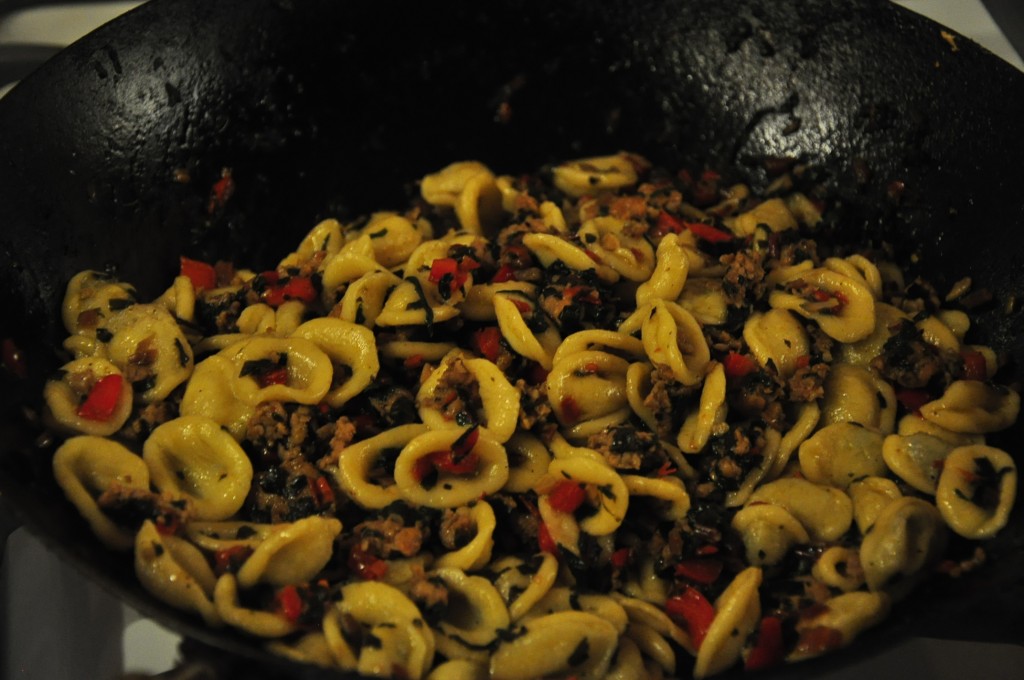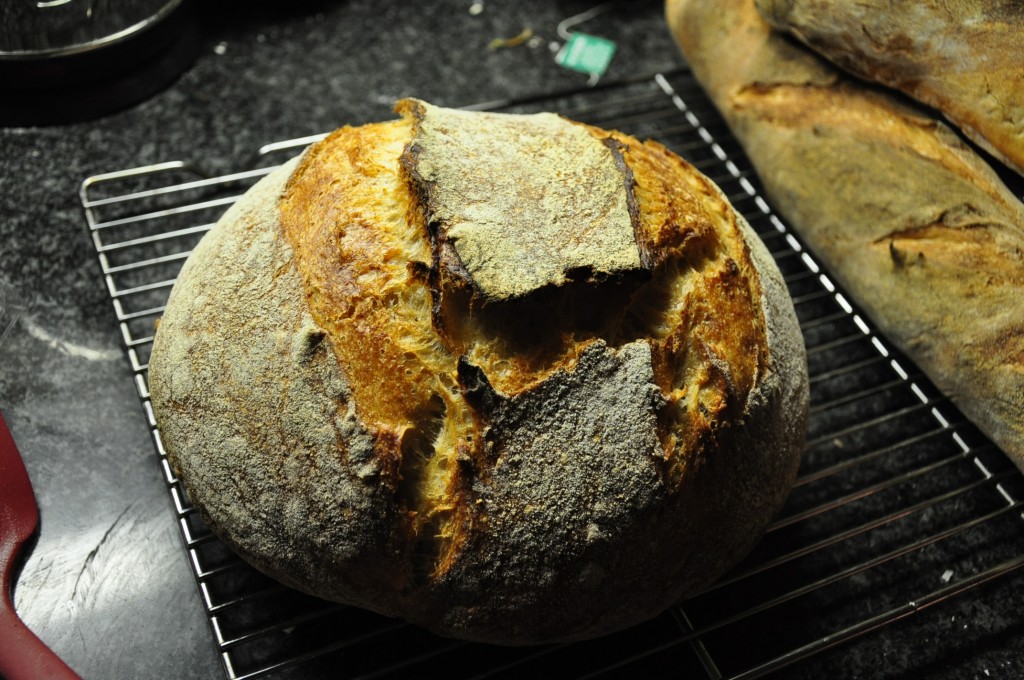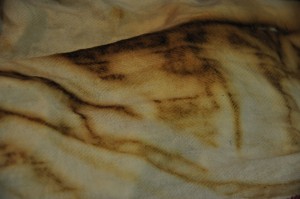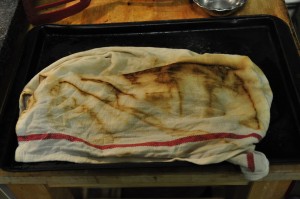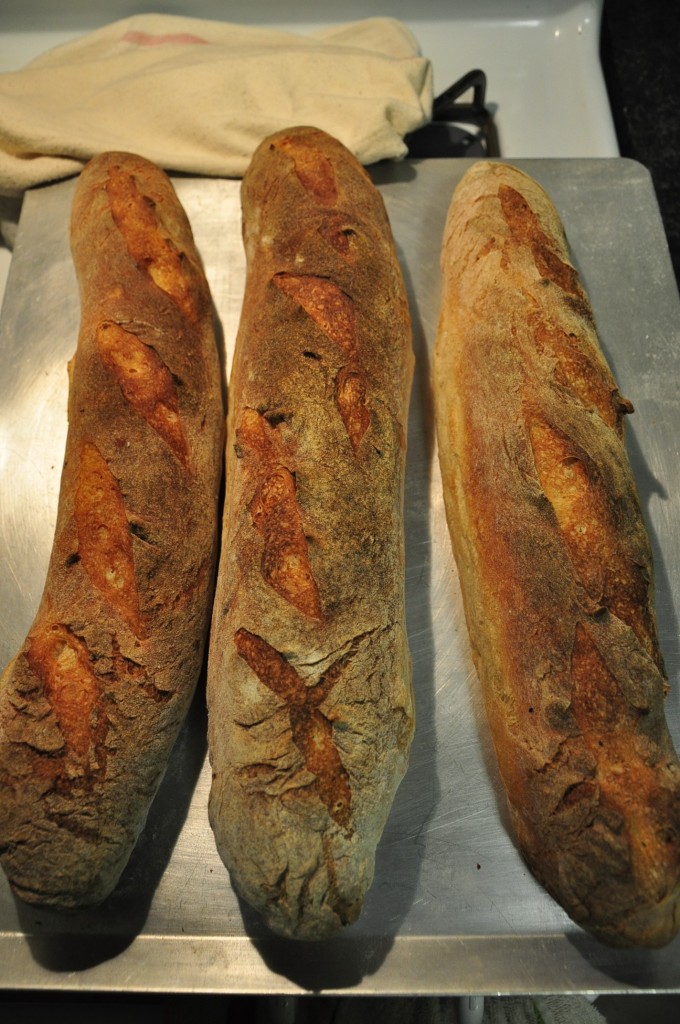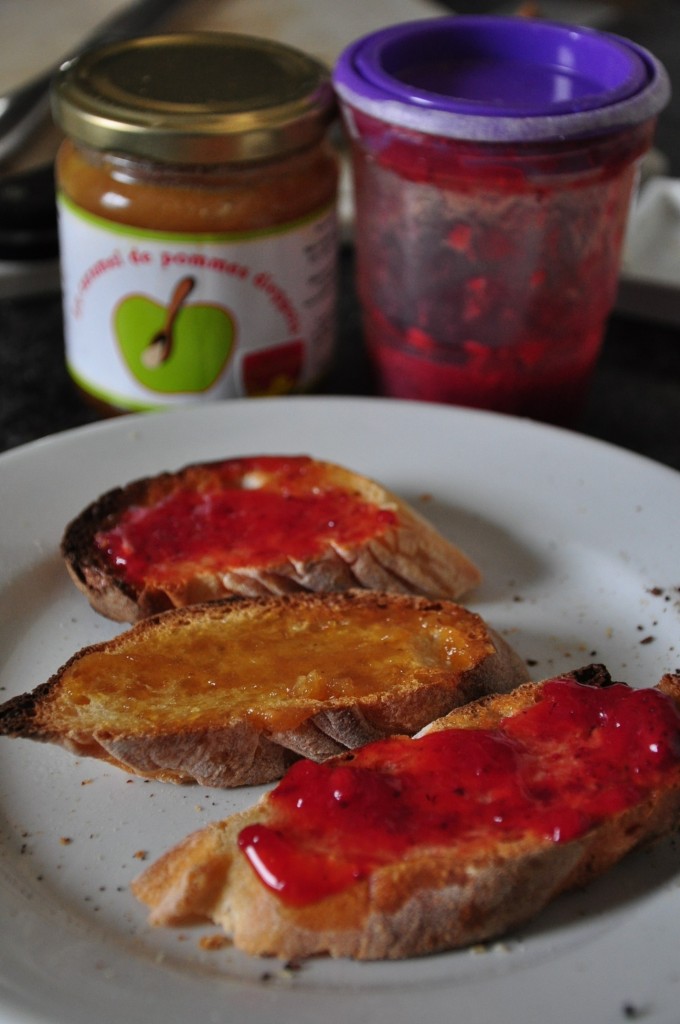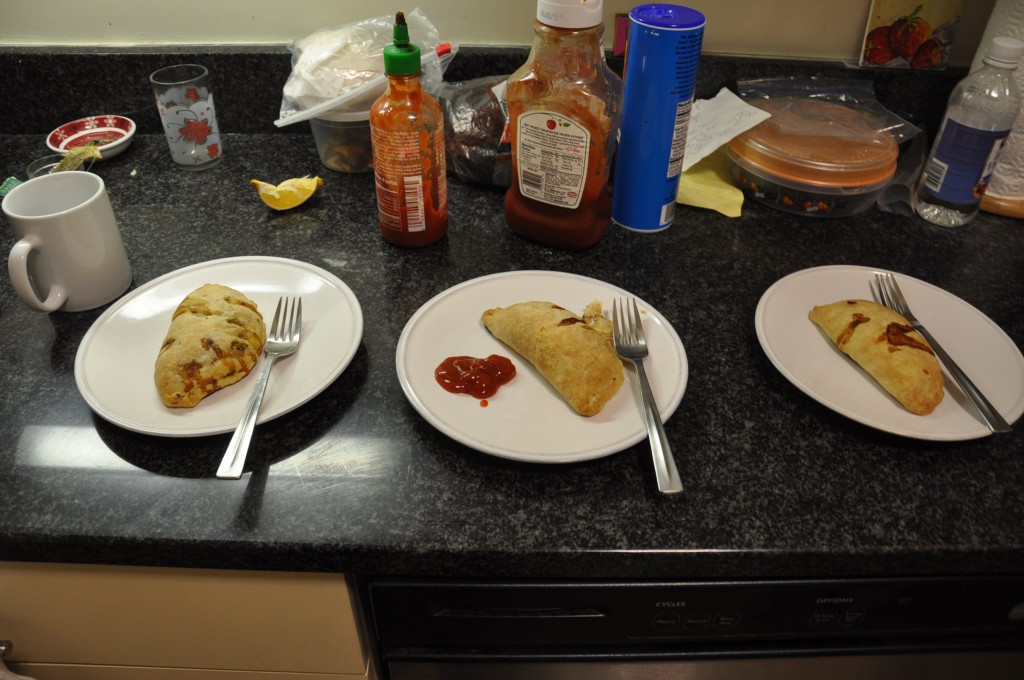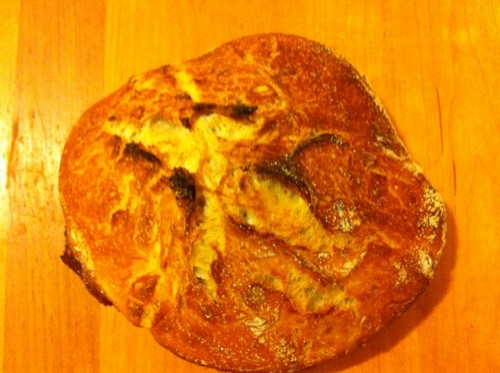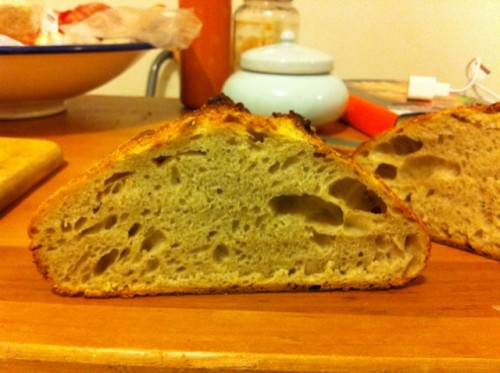A couple months ago, Shef, K and I made the momentous move back from Brooklyn, NY to the Brooklyn of the Bay Area aka Oakland, CA. At least that’s the comparison made by NYC- centric foks. I’ll be honest. There’s a fair smattering of hipsters and quite a healthy foodie scene here but I would say that’s a national trend and not just a Brooklyn thing. Anyway, a few weeks in, to help ease us into West Coast living, our good friends Matt (whom you might remember from such hits at sourdough baby, wood oven pizza and belated Chinese New Year) and Arlie invited some of their good friends (Manu, Simba, Cree and Dan) over to our place for some dinner. But these weren’t just any friends and this wasn’t just some dinner. The guest of honor (or rather chef of honor) was Manu who, being Italian, brought with her the requisite skills of making pasta – by hand. See, in my limited world view, all Italians know how to make pasta, just like all Chinese people know how to fold dumplings. Thankfully in this case, my ridiculous cultural expectations proved correct because Manu brought with her some real knowledge and skills. In fact, she instructed us in the production of TWO types of pasta: orecchiette and pici.
Both pastas are so simple to make and when cooked are exponentially better than dried pasta. Now, I understand why the term al dente (to the teeth) has been used to describe the way pasta should be cooked. There’s something about the fresh, hand worked dough, the thicker noodle and shorter boiling time that results in pasta that has that balanced, dense, springy but totally cooked texture. It has real substance. It requires you to actually pause and chew so you can really appreciate the pasta, the sauce, the company around you and the witty conversation that erupts between bites. No wonder the slow food movement started in Italy. Part of that slowness must surely have to do with the preparation. Making pasta by hand -especially by amateur hand – is a rather labor intensive process so it was great to have friends over who could throw down like they were in the old country. The next night when I made the orecchiette and pici by myself with the leftover dough, it took a lot longer. But again, the end product was ridiculously good. Now, I’m not tooting my own horn. I’m tooting the horn of homemade pasta. Hallelujah!
Here’s Manu’s recipe for the orecchiette:
semolina flour
water
that’s it!
And here are the ingredients for the sauce she made for the orecchiette (quantities are dependent on how much pasta you’re cooking):
broccoli, kale (though if you can find it you should use rapini or broccoli rabe)
garlic
chili
Italian sausage
salt
pepper
olive oil
And this is how she does it:
Here’s Manu’s recipe for the pici:
2 parts white all purpose flour
1 part semolina
pinch of salt
water
that’s it!
And here’s Manu’s recipe for the sauce she made for the pici:
ripe tomatoes
1 green tomato for extra acidity
garlic
olive oil
salt
bread crumbs fried in olive oil
And here’s how she does it.


